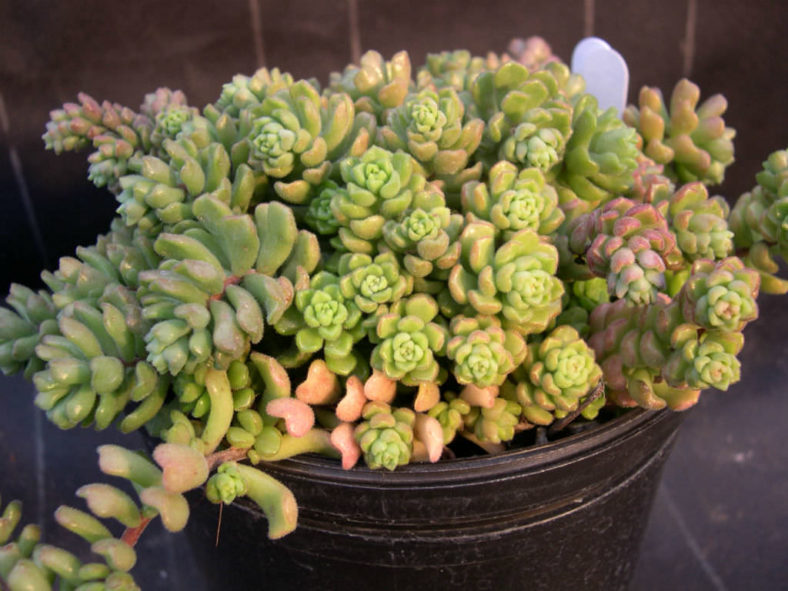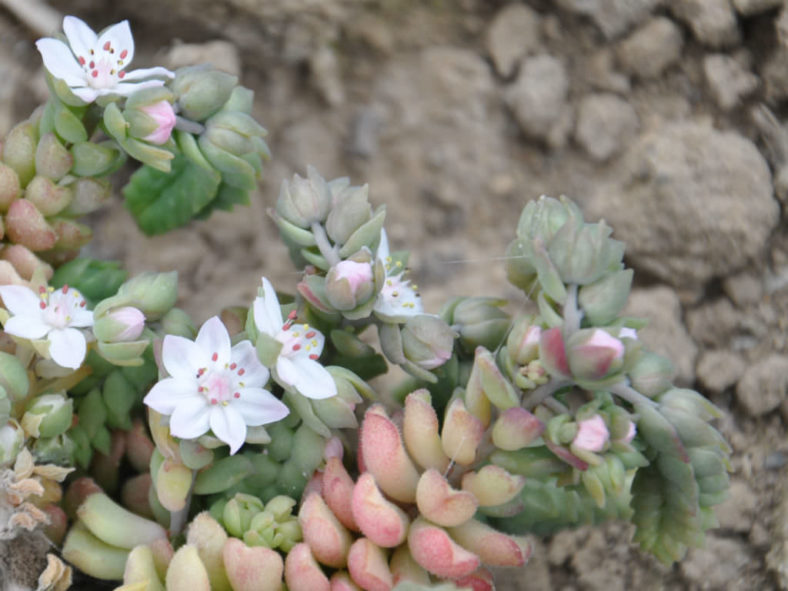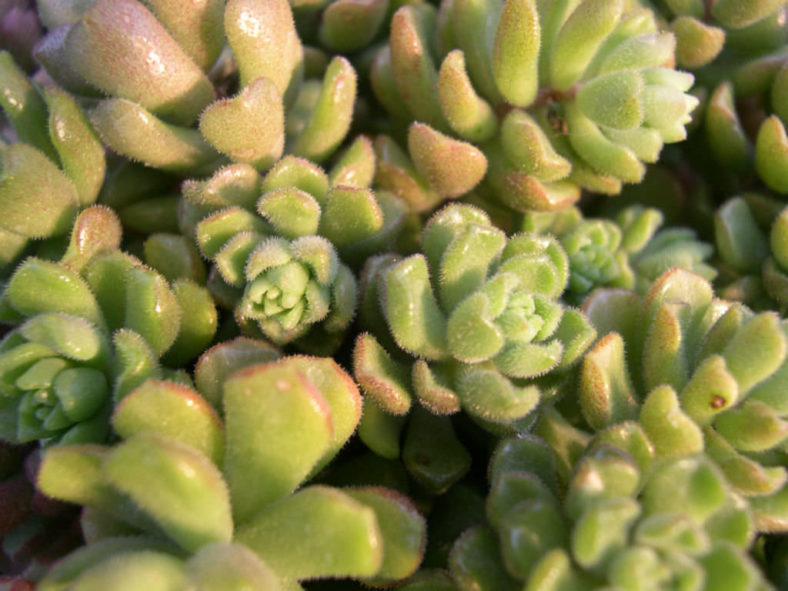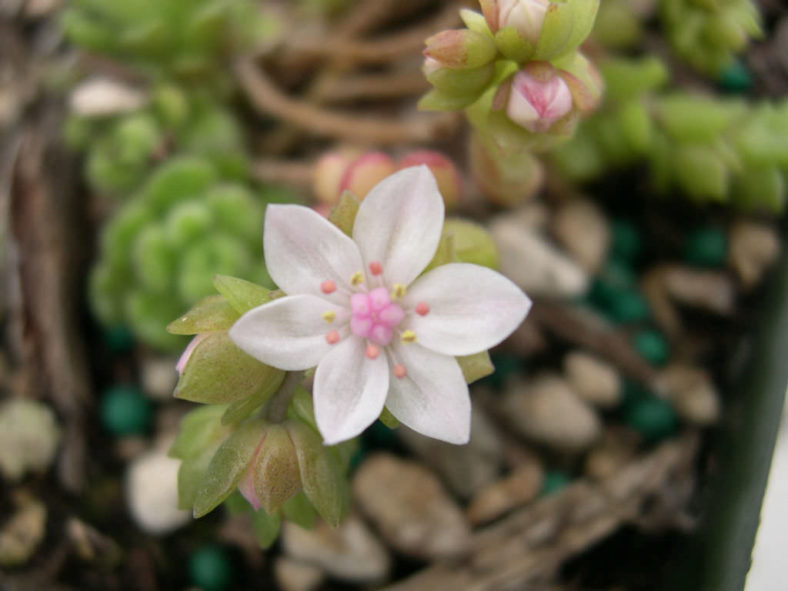Scientific Name
Sedum versadense C. H. Thompson
Synonym(s)
Sedum chontalense, Sedum versadense var. versadense
Scientific Classification
Family: Crassulaceae
Subfamily: Sempervivoideae
Tribe: Sedeae
Genus: Sedum
Etymology
The specific epithet "versadense (ver-suh-DEN-see)" means "densely covered" and refers to stems with leaves crowded together.
Origin
Sedum versadense is native to Mexico (Morelos and Oaxaca).
Description
Sedum versadense is a small succulent shrub with hairy erect or decumbent stems and small, thick, fleshy leaves covered with tiny hairs. It can grow up to 6 inches (15 cm) tall with a spread usually equal to the height. The leaves are reddish-cream on the upper surface, dark brownish-red on the lower surface, and can measure up to 1.2 inches (3 cm) long and 0.6 inches (1.5 cm) wide.
The flowers are star-shaped, pinkish-white, and appear in clusters during the summer months.

How to Grow and Care for Sedum versadense
Light: These succulents grow best in locations where they will enjoy the full sun for at least six hours daily. Most species will tolerate partial shade but will not thrive in deep shade.
Soil: Sedums do not like to sit in waterlogged soil, so drainage is essential to prevent root rot. Choose a gritty, well-draining soil.
Hardiness: Sedum versadense can withstand temperatures as low as 10 to 30 °F (-12.2 to -1.1 °C), USDA hardiness zones 8a to 9b.
Watering: Sedum plants are drought-tolerant but do need some water. They do their best with regular watering from spring through fall. Water thoroughly and wait for the soil to dry out before watering again.
Fertilizing: A balanced organic fertilizer each spring is generally all Sedums require. Feeding is unnecessary as long as the plants are divided annually and provided with fresh soil.
Repotting: Sedums in containers require little more care than those in gardens. Repot your plants when they outgrow their current pot by moving them to a larger container to hold the plant better.
Propagation: Once you have one Sedum, it is easy to make more by taking stems or leaf cuttings and dividing the plant. Sedums are also easy to grow from seed.
Learn more at How to Grow and Care for Sedum.
Toxicity of Sedum versadense
Sedums are not listed as toxic for people but can be mildly toxic to pets and children.
Hybrid of Sedum versadense
Links
- Back to genus Sedum
- Succupedia: Browse succulents by Scientific Name, Common Name, Genus, Family, USDA Hardiness Zone, Origin, or cacti by Genus
Photo Gallery
Click on a photo to see a larger version.


